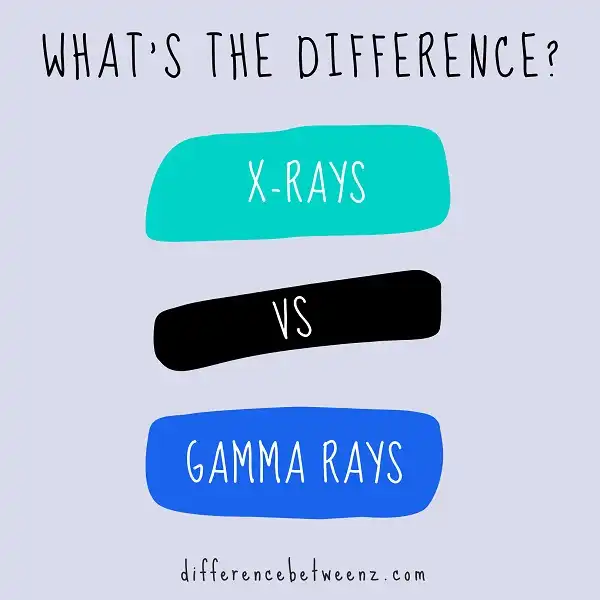Have you ever wondered what the difference is between X rays and gamma rays? Both are types of radiation, but they have different properties and occur in different environments. This post will explain the differences between X rays and gamma rays, as well as their uses and dangers.
What are X-Rays?
X-rays are a type of electromagnetic radiation, similar to light waves or radio waves, that have a very short wavelength. These powerful rays were first discovered by a physicist named Wilhelm Rontgen in the late 1800s, and they quickly became an invaluable tool for medical imaging. Today, X-ray machines are used widely in hospitals and clinics to take pictures of the inside of the body and diagnose various diseases or injuries. They can capture very detailed images of bones, organs, blood vessels, and other internal structures, making them an essential part of modern healthcare. Whether examining broken bones or detecting tumors or other abnormalities, X-rays provide important insight into the inner workings of our bodies. So while they may seem mysterious at first glance, ultimately X-rays are simply another form of scientific discovery that continues to transform medicine for the better.
What are Gamma Rays?
Gamma rays are the most energetic photons in the electromagnetic spectrum. They are produced by the hottest and most energetic objects in the universe, such as supernovae and black holes. Gamma rays can also be produced by nuclear reactions, such as those that occur in nuclear power plants. Gamma rays are extremely harmful to living tissue and can cause cancer and other potentially deadly diseases. Fortunately, our atmosphere absorbs most gamma rays before they reach the ground. However, some gamma rays do make it through, and these can be detected by special telescopes. Gamma-ray astronomy is a relatively new field of study, and scientists are still learning a great deal about these powerful and mysterious particles.
Differences between X-Rays and Gamma Rays
- X rays and gamma rays are two types of electromagnetic radiation that are used in a variety of medical and scientific applications. Although these two types of rays may seem very similar, they actually have some important differences.
- One fundamental difference between X-rays and gamma rays is their energy levels. X rays are relatively low energy radiation, while gamma rays have much higher levels of energy. This means that gamma rays can travel through much thicker material, such as bones or heavy equipment, without being absorbed or deflected. As a result, gamma rays are often used in settings where high-resolution images are needed, such as cancer treatment or diagnostic imaging.
- Another key difference between X rays and gamma rays is their source. Gamma rays are generated by radioactive decay within the nucleus of an atom, while Xrays are produced by interacting electrons raining down on a target material. Though this means that gamma ray sources tend to be more stable than X ray sources, it also gives them somewhat different properties, making them better suited to certain uses than others. Overall, though both X ray and gamma ray technologies play important roles in modern medicine and science, it is crucial to understand their differences in order to get the most out of each type of radiation.
Conclusion
While gamma rays are more energetic, they also have a shorter wavelength than X-rays. This means that they can be focused on a much smaller area, making them great for treating tumors and other diseases in the body. X-rays are not as powerful as gamma rays, but they have a longer wavelength which allows them to penetrate deeper into the body. This makes them better for detecting problems with bones and organs.


